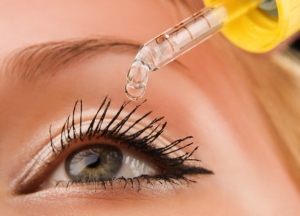Dry Eyes
Dry eyes occur when there is a lack of sufficient lubrication and moisture on the surface of the eye. In order to have clear vision and maintain healthy eyes, especially at the front surface of the eye, lubrication is crucial for healthy eyes. Tears can also be produced of the incorrect consistency, which lead the tears to evaporate quicker than expected.
The medical terms for dry eye syndrome are keratoconjunctivitis sicca (KCS), dysfunctional tear syndrome, lacrimal keratoconjunctivitis, evaporative tear deficiency, aqueous tear deficiency, and LASIK-induced neurotrophic epitheliopathy (LNE).

Our eyes have a tear film which serve to protect and nourish the eyes. Each time we blink, the film is spread over our eyes to help lubricate the cornea. This tear film is composed of three layers, an oil (lipid) layer, a water (aqueous) layer and a mucin layer. The three layers work together to help reduce the risk of eye infection, wash away foreign particles, and to protect and lubricate the eyes. Since the three layers work simultaneously, if one part of the tear film doesn’t cooperate with the other layers irregular tear production will occur translating to dry eye symptoms.
What causes dry eyes?
There are several other factors that can be attributed to dry eye syndrome. Some of the factors inducing dry eye syndrome include age, environmental conditions and medical conditions. With the decrease in tear production or the tears evaporating too quickly, dry eye symptoms begin to develop. Symptoms of dry eyes include:
- Pain and redness in the eyes
- Irritated, gritty, scratchy, or burning eyes
- Excess watering
- Stringy discharge from the eye
- Episodes of blurred vision
In order to measure the amount of tears in your eyes, your eye doctor will conduct the Schirmer’s test. This method of measuring tear production is done by placing a strip of filter paper under the lower eyelid. You will be asked to close your eyes for about five minutes and the doctor will measure how moist the filter paper is which will determine the results.
Treatments
There are several methods to treating dry eye, treatment will be determined depending on the severity of the symptoms. Some treatment methods include inserting plugs in the eyelids, where tears are drained from the eye to the nose, a prescription for artificial tears or anti-inflammatory medication. Dr. Greenbaum also offers the option of autologous tears. Autologous tears are created by drawing a patient’s blood and then extracting the serum via centrifuge.
To learn more about dry eyes, click here to make an appointment to speak with Dr. Greenbaum today.
Source: National Eye Institute & AAO
